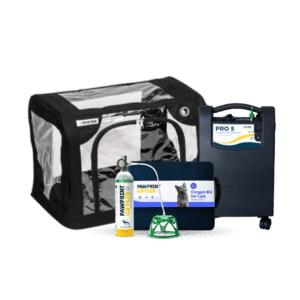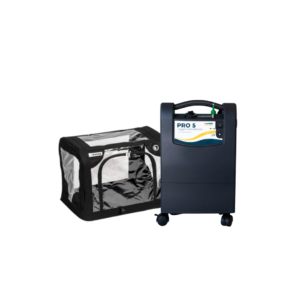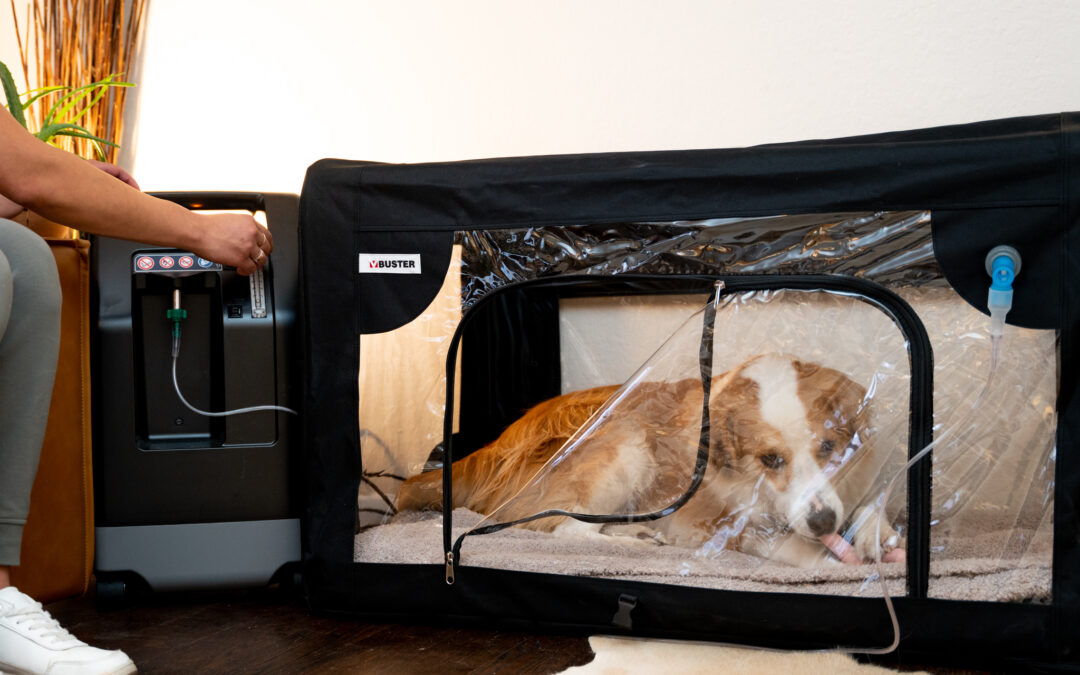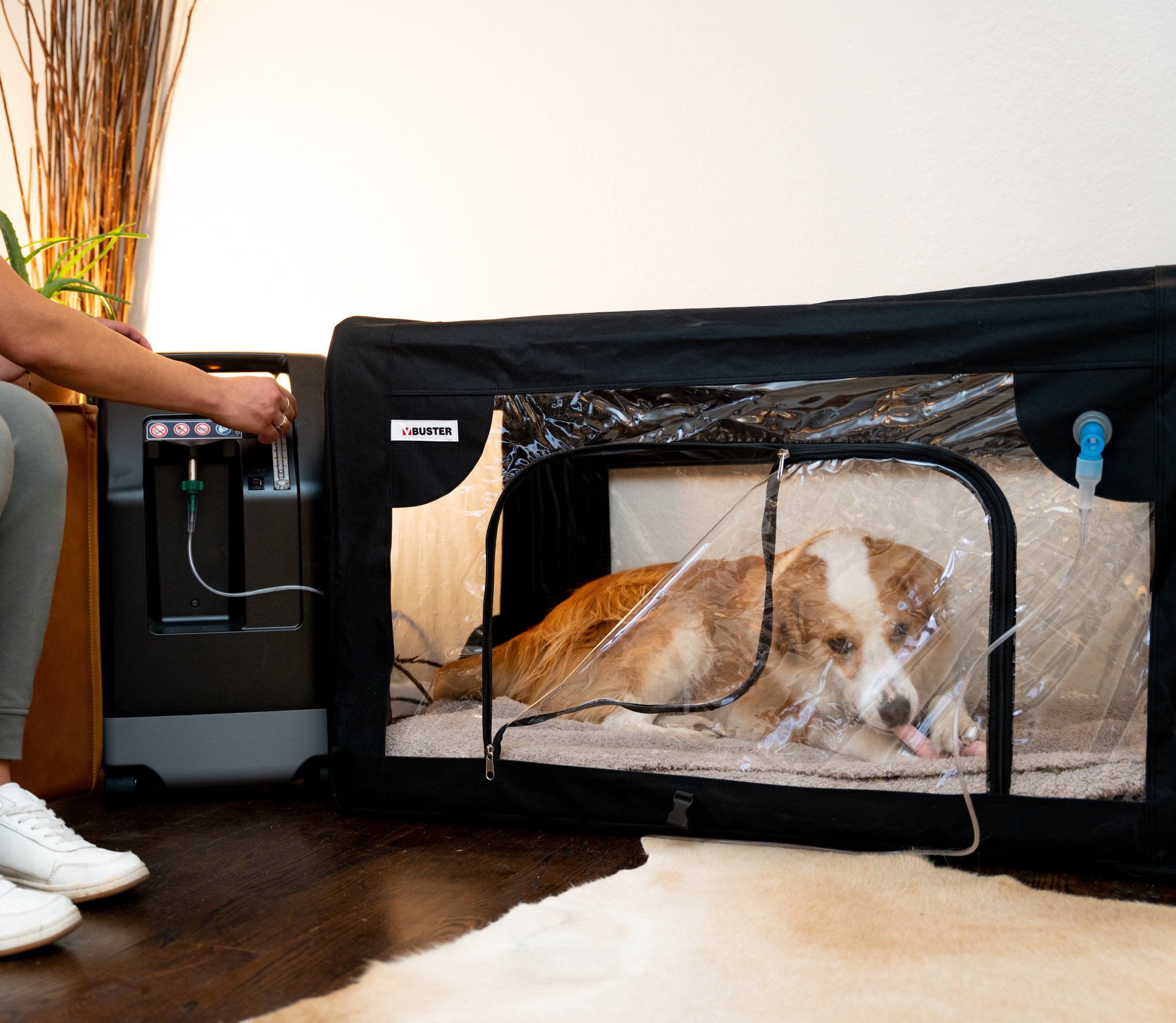Seizures in dogs can be caused by various factors, including epilepsy, liver disease, kidney failure, brain tumors, or toxins. They can be distressing to watch, as they often involve convulsions, loss of consciousness, drooling, twitching, and urinating or defecating.
Oxygen therapy involves providing supplemental oxygen to pets who are not able to get enough oxygen on their own. It can be especially beneficial in the immediate aftermath of a seizure for several reasons:
Understanding Pet Seizures
When a dog has a seizure, it’s going through a complex neurological event that affects its brain function. The experience can vary widely in intensity, duration, and manifestation, but generally, seizures in dogs can be classified into several stages and types. Here’s a breakdown of what happens during a seizure:
Pre-Seizure Phase (Aura)
- Behavior Changes: Before the seizure starts, you might notice changes in your dog’s behavior. This can include appearing restless, anxious, whining, seeking attention, or appearing disoriented.
- Sensory Changes: Some dogs may experience visual or auditory disturbances that are not observable to owners.
Ictal Phase (Seizure Activity)
- Generalized Seizures: The most recognizable form, generalized seizures (also known as grand mal seizures), involve convulsions that affect the whole body. Symptoms can include loss of consciousness, muscle rigidity, jerking movements, drooling, chomping, tongue chewing, or loss of bladder and bowel control.
- Focal Seizures: These affect only a part of the body and may involve unusual movements in one limb or one side of the body, facial twitches, or even just behavioral changes. Sometimes focal seizures can progress to generalized seizures.
- Duration: Seizures typically last from a few seconds to a couple of minutes. A seizure lasting more than five minutes (status epilepticus) is a medical emergency requiring immediate veterinary attention.
Post-Seizure Phase (Postictal)
- Disorientation and Confusion: After the seizure, dogs often go through a postictal phase, where they may appear disoriented, confused, or temporarily blind. They may not recognize familiar people or surroundings immediately.
- Physical Symptoms: Dogs might also exhibit unsteadiness, excessive thirst or hunger, and fatigue. This phase can last from minutes to hours or, in some cases, days.
What’s Happening Internally
- Neuronal Activity: Seizures are the result of excessive electrical discharge in the neurons of the brain. This can lead to the involuntary symptoms observed during a seizure.
- Brain’s Response: The brain temporarily loses its ability to maintain normal function, which is why you see such pronounced physical manifestations.
- Oxygen and Glucose Consumption: The brain’s consumption of oxygen and glucose increases dramatically during a seizure, which is why post-seizure care often involves ensuring the dog is in a calm, oxygen-rich environment to help it recover.
Causes of Seizures
Seizures can be caused by various factors, including genetic predisposition (epilepsy), metabolic disorders (like liver or kidney disease), traumatic injuries, brain tumors, toxins, or infections. Identifying the underlying cause is crucial for effective management and treatment.

Utilizing Oxygen Therapy After Seizures
Oxygen therapy involves providing supplemental oxygen to pets who are not able to get enough oxygen on their own. It can be especially beneficial in the immediate aftermath of a seizure for several reasons:
- Enhances Oxygen Delivery: Seizures can temporarily disrupt normal breathing and oxygenation. Oxygen therapy ensures that the brain and other vital organs receive enough oxygen, which is crucial for recovery after a seizure.
- Reduces Brain Swelling: Seizures can cause cerebral edema (swelling of the brain). Oxygen can help reduce swelling, potentially minimizing damage to brain cells.
- Supports Metabolic Needs: After a seizure, the body’s metabolic demands can increase. Supplemental oxygen can help meet these increased needs, supporting the recovery process.
- Stabilizes Condition: Oxygen therapy can help stabilize a dog’s condition post-seizure, allowing for better assessment and management of the underlying cause.
Benefits of Oxygen Therapy
You can choose to administer Oxygen Therapy to your pet via an Oxygen Chamber and Concentrator or an Oxygen Rescue Kit
- Improves Oxygen Saturation: Ensures tissues and organs receive adequate oxygen, especially important for brain recovery.
- Alleviates Stress: Can help calm the dog after the stress of a seizure, as adequate oxygenation may have a soothing effect.
- Aids in Recovery: Supports overall recovery by ensuring the body’s increased metabolic demands after a seizure are met.
1. Oxygen Chamber
Our Oxygen Chambers are cost effective, mobile (not built into a wall) and durable. Pet Owners can set these up with ease in their own home and administer multiple times a day.
The Pet Oxygen Shop
-
Sale!

Extended Oxygen Therapy Bundle for Pets, up to 25 lbs
$1,300.00 -
Sale!

Extended Oxygen Therapy Bundle for Large Pets, up to 70 lbs
$2,100.00 -
Sale!

Extended + Rescue Oxygen Therapy Bundle for Large Dogs
$2,300.00 -
Sale!

Extended + Rescue Oxygen Therapy Bundle for Cats
$1,500.00 -
Sale!

Extended + Rescue Oxygen Therapy Bundle for Small Dogs
$1,500.00 -
Sale!

Extended Oxygen Therapy Bundle for Pets, up to 10 lbs
$1,200.00



